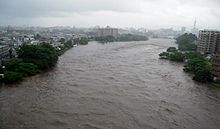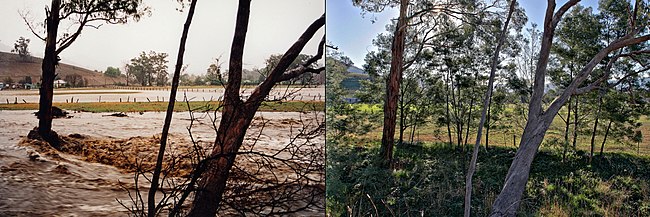All Saints' Flood (1304)
The All Saints was a storm flood, which, pulled the southwestern Baltic Sea coast, in particular the Vorpommern area affected. The eponymous dating to the All Saints' Day (November 1 ) in 1304 goes back to the Stralsundische chronicle of Johann Berckmann († 1560). The day of the event has not been established, during the year 1304 is considered probable.
Like most similar storm flood arose, the All Saints', as the pent-up after days of strong west winds in the central and northern Baltic Sea water after a turnaround in Northeast abruptly on the Pomeranian coast spilled ( bathtub effect). The oldest known written mention of the floods come in two Stralsund chronicles from the late 15th century, Rudolf Baier 1893 published. In them is reported by a strong storm, were destroyed by the numerous homes and churches. The emergence of new lows is attributed to a then 3 to 4 meters deep channel through the Greifswald Boddenrandschwelle between Rügen and the Ruden. In written by Johannes Bugenhagen in the 16th century " Pomerania " This defined the New deep as new shipping lanes or as a significant entrance. While the two older Stralsund chroniclers and Bugenhagen nothing reported an alleged land connection between the peninsula and the Moenchgut Ruden and their interruption, this is in the following chronicles of the 16th century by John Berckmann, Thomas Kantzow and Nicolaus of Klemptzen the case.
In the chronicles of the 17th and 18th centuries the descriptions of the impact of floods are usually exaggerated and untrue. So Albert Georg Schwartz called, the loss of land wanted to prove on Ruden and reported the sinking of one point on this villages, to a received Gottlieb Samuel Pristaff certificate. The fonts supplied by Pristaff were exposed only in the second half of the 19th century as fakes, so that the invented this information was disseminated by various authors, and especially in the local history literature were included.










